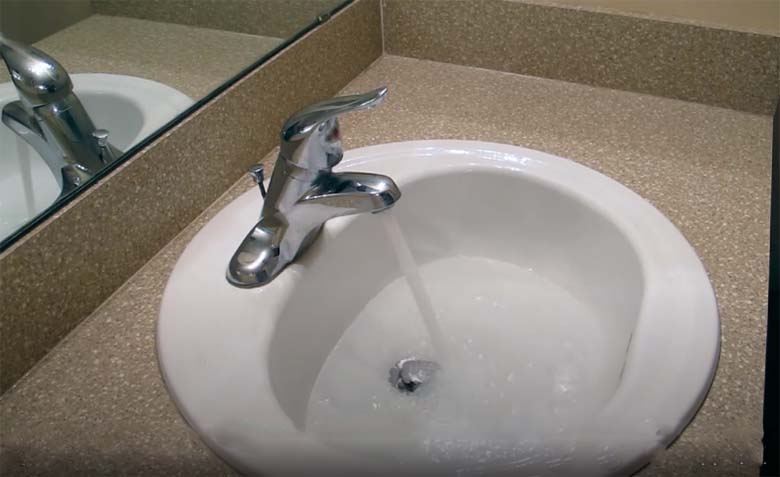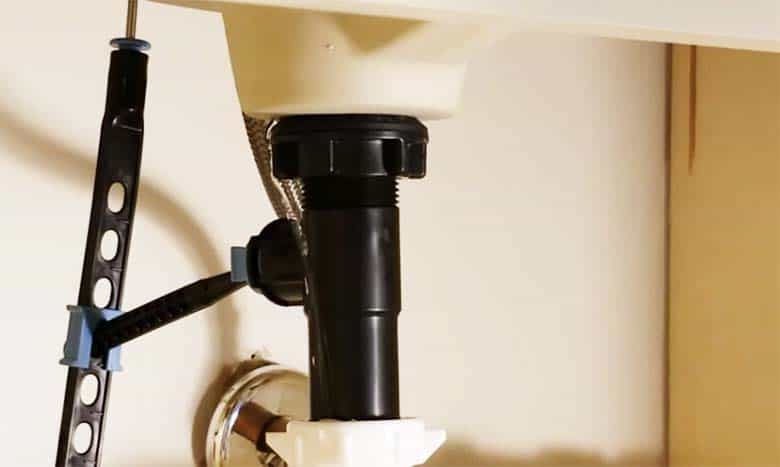A bathroom sink should drain without any problem and keep the sink neat and clean. When the sink drains slowly, you might wonder if it happens because of clogs.
Nonetheless, at rare moments it might happen that the bathroom sink won’t drain, not clogged. Yes, a bathroom sink may still drain slowly without any clogs. When you find that slow draining bathroom sink not clogged, you need to figure out its actual reasons.
A sink might drain slowly without clogs due to sludge development inside the drain, soap and chemical residue, toothpaste inside the drain, and misaligned pipes of the bathroom sink. Since these are pretty unusual cases, many people often ask, “Why is my sink not draining when there is no clog?”
So, let’s find the causes of a slow draining bathroom sink without clogs. We will also show you ways to fix it.
The Reasons Bathroom Sink Won’t Drain Not Clogged
When you see the bathroom sink not draining, no clog, you need to bring the Sherlock Holmes inside you out and start investing. However, the following reasons will help you diagnose a slow draining bathroom sink without clogs.
Soap and chemical build-up:
Most of us will wash our hands and face in the bathroom sink with soaps. Thus, the soaps can easily go inside the drain. Also, we use chemicals to wash off our spectacles, camera lenses, or other items in the bathroom sink. It also leads to chemical build-up inside the bathroom sink drain.
Many chemicals and soaps will react with the mineral water inside the drain. This chemical reaction might develop into soap scum. When it grows for too long, soap scum can reduce the diameter of the pipe and cause slow draining.
This problem is more acute in regions with hard water. Since hard water has different minerals, it reacts with the chemical or soap to build up the soap scum.
Misaligned drain pipes:
The drain pipes of your bathroom sink should be installed properly with accurate alignment. Sometimes, the plumber might install the drain pipes and P-trap at too sharp angles. The water will find it hard to travel through sharp angles. Consequently, water will drain slowly.
Also, residues will find it difficult to pass through the drain at sharp angles. Eventually, the residual build-up will slow the draining rate.
Lack of venting:
Many homeowners don’t know that proper venting is essential for their home plumbing system to work properly. When there’s no venting or the venting is inaccurate, you will see a slow drain through the bathroom sink, even if it isn’t clogged. Thus, when you see the shower drain slow but not clogged, you must check the venting of your bathroom plumbing system.
Vents will provide air supply to the plumbing system and drain pipes. The air supply boosts the pressure inside the plumbing pipes to help the water drain appropriately. When the vent is damaged, or there’s no vent inside the plumbing, it will slow down the draining of your bathroom sink.
Sludge and toothpaste build-up
Sludge builds up in the sink drain because of oil, fat, and greases. Many people will dump greases and oils in the bathroom sink, gradually developing into thick residues. Over time, it reduces the diameter of the pipe and causes slow draining from the sink.
Although grease and oil dumping are mainly linked with the kitchen sink, it sometimes might happen with the bathroom sink. Also, women might take off their make-up after their offices or parties in the bathroom sink. It too causes oil and fat development in the bathroom sink drain.
Also, when you regularly wash your teeth in the bathroom sink, toothpaste residues will travel through the sink’s drain pipes. When you split toothpaste into the bathroom sink drain, it can easily get hardened. Thus, it will restrict the water flow through the drain.
Whatever may be the cause, toothpaste and sludge can easily limit the drainage rate of your bathroom sink. So, it would help if you fixed it.
Tree roots:
Although it is hard to believe, tree roots might infiltrate to slow the bathroom sink drain. It happens if your bathroom is near any outdoor trees with roots engraved in the soil and wall. It happens in the rarest cases.
However, when tree roots are causing the slow drain of the bathroom sink, you need to call a plumber. He can remove the plumbing system to fix the problem. Also, you might need to reinstall new plumbing in the bathroom. So, be prepared for some costly investment.
How To Fix A Slow Draining Bathroom Drain Not Clogged:
You might have got your answer to the question, “Why is my new bathroom sink draining slowly?” So, it’s time to fix the slow draining issue of the bathroom sink and shower. The following five methods will help you fix the slow draining bathroom ASAP.
Method 1: Clean the sink stopper
Sometimes the stopper of the bathroom sink may build-up residues, debris, and soapy lather around it. This will slow the draining of the sink. Also, hairs might circle it. Thus, when you experience a bathroom sink not draining, no clog, you must start by cleaning the stopper.
- Firstly, look underneath the sink to find the small rod attached to the stopper. It will also have a nut and clip. The clip attaches the small rod to the drain pipe.
- Use the pliers to loosen and remove the nut to detach the smaller rod. Then, squeeze the clip attached to the rod. It will release the smaller rod to lift the sink stopper.
- Remove the hairs around the stopper. Use an old toothbrush and soap to clean off the stopper properly before you remount it.
Method 2: Use a plumbing snake to remove the residues and debris
When you have opened the stopper, you can access it inside the drainpipe of the bathroom sink. So, why not you try to remove debris and residues from the pipe? Yes, it’s time you get a drain snake or auger to insert it inside the drainage system.
A plumbing snake or auger is a long metal with hooks on its top. As you insert the auger inside the drainage pipe, move it to collect the debris and residues. Also, you might even use a hair clog tool to remove the debris and hairs. However, it won’t reach as deep as the auger.
Moreover, an auger or plumbing snake is inexpensive to get within $10-$20. Also, it will last for years. So, you may use it to remove the hair, residual build-up, and debris from the drainage system of your bathroom sink.
Method 3: Melt and remove the sludge
If the bathroom sink is draining slowly due to sludge and toothpaste build-up, you need to melt the sludge to remove it. Sludge usually develops around the pipe to narrow down its mouth, reducing the drainage performance.
- As the stopper is removed, pour one cup of baking soda and white vinegar through the drainage line.
- Now, put a small rug over the drainage as white vinegar and baking soda react to bubble up and fizz.
- Wait at least 15 minutes until the fizzing reaction breaks down the sludge into smaller particles.
- Finally, pour boiling water through the drainage. It will remove the sludge. You need to pour hot water through the drainage for a couple of minutes. It will remove the last particles of sludge from the drainage.
Method 4: Use a plunger to clean off the drainage
If you don’t have a plumbing snake or auger in your hand, you may use a plunger. The plunger will get hold of the debris to ease them out of the bathroom sink.
- Use a small old rag to block the hole in the sink overflow section. Now, place the sink plunger right over the drainage of the bathroom sink.
- Fill the plunger cup with water. For this, you will need to fill the basin.
- Now, move the plunger up and down with as much force as possible. It will unclog the drain, and you will see the water from the basin disappearing through the pipes.
The use of the plunger and plumbing auger is quite similar. The difference is that the auger will reach deep inside the pipes, which the plunger fails.
Final Words
You might get panicked when you see the bathroom sink won’t drain but is not clogged. Thankfully, you can easily diagnose the slow draining issue and fix it ASAP. Also, fixing the slow draining of the sink doesn’t need any plumbing skill at all. So, you may easily do it without calling a plumber.
I am James Martin, An professional plumber with more than 16 years of experience. The main purpose of my writing is to share my experiences of helping others. Be with me and explore bathroom plumbing, installation, cleanness ideas, and many more.




